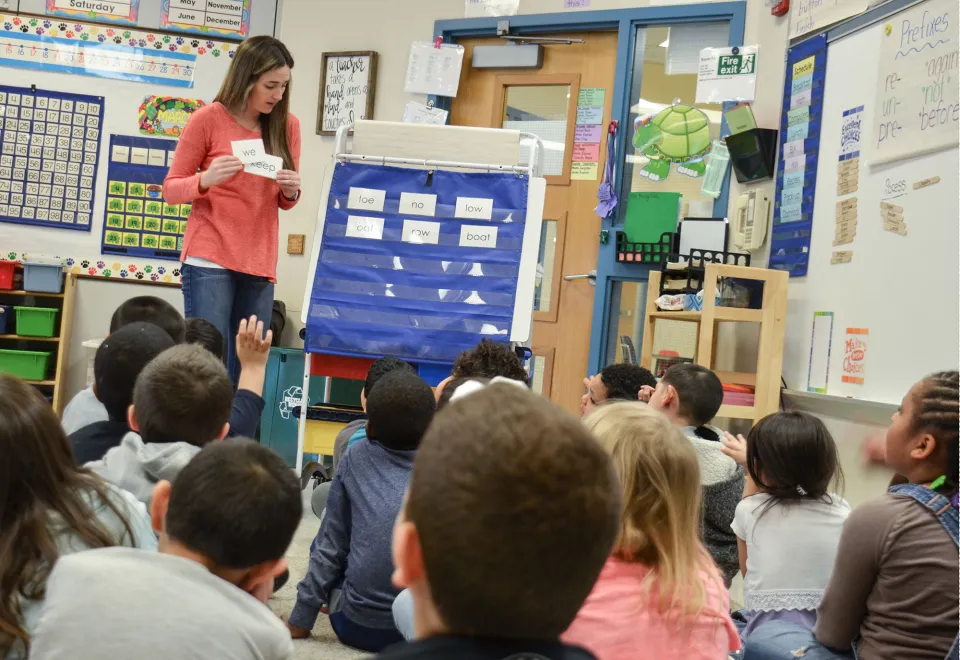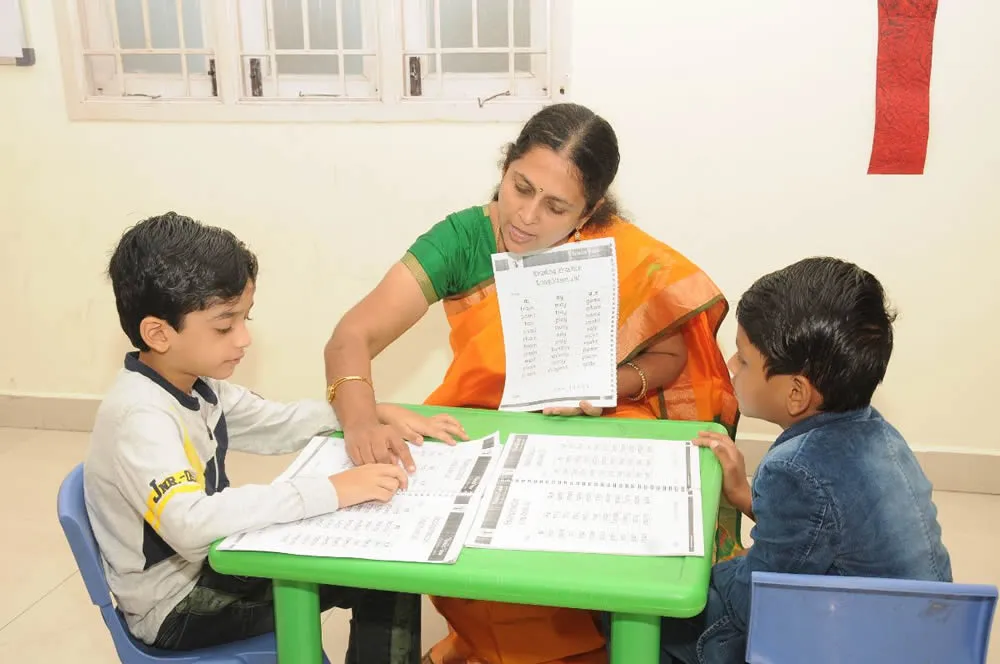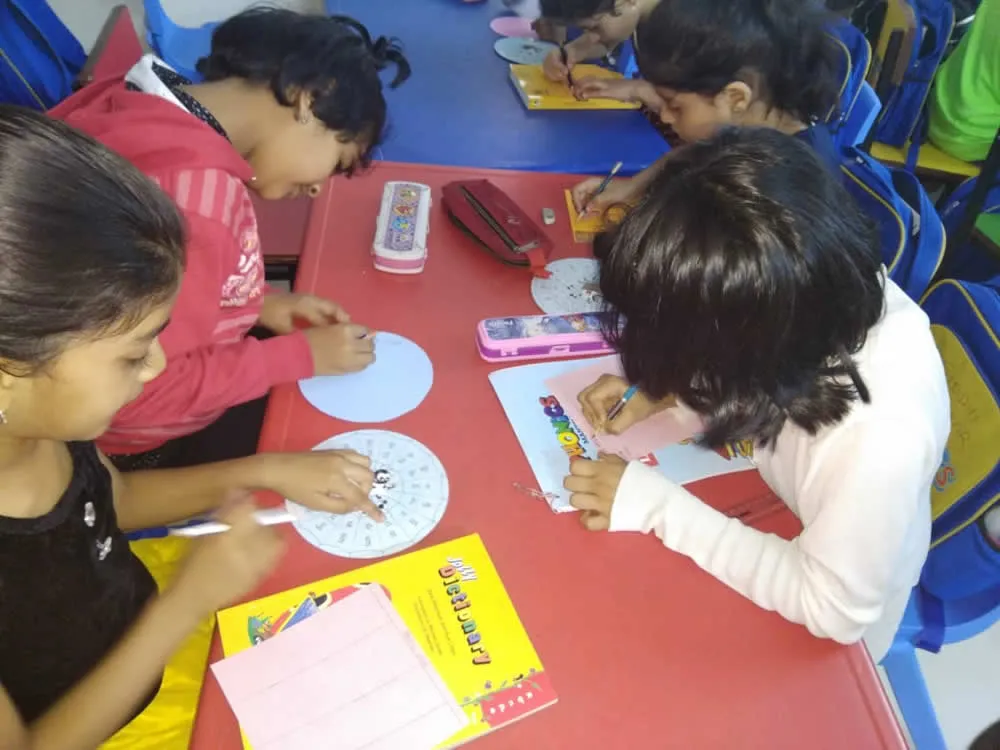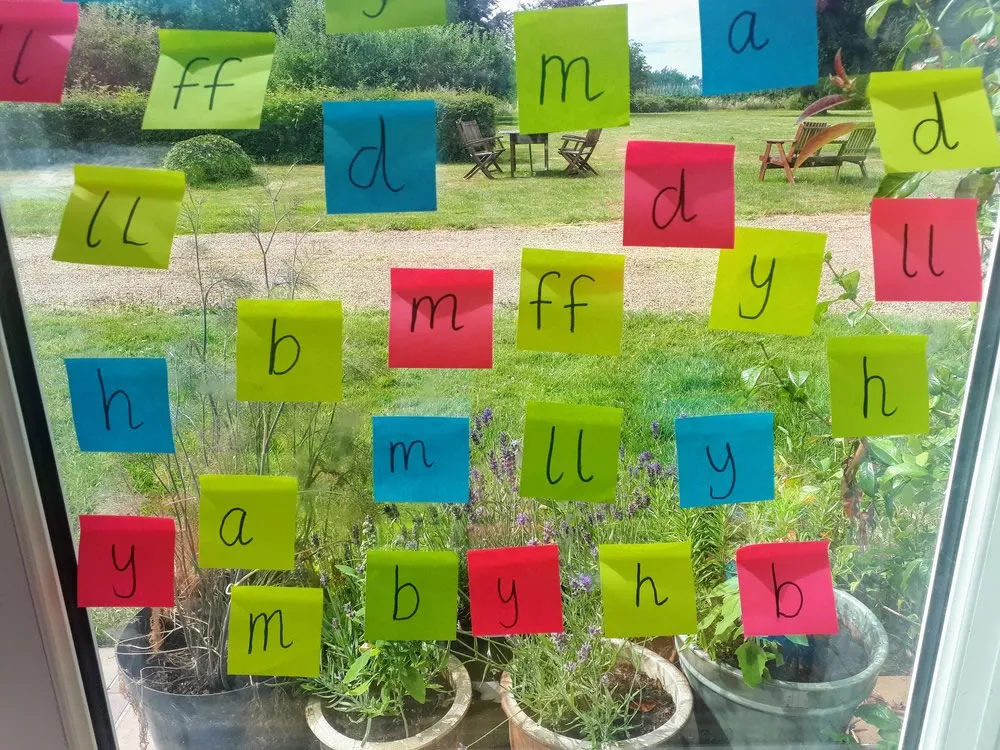How to Become a Phonics Teacher?

Source: iowp
How to Become a Phonics Teacher?
Phonics is receiving plenty of attention with the constant evolution in the education world. If you are passionate about making a career in teaching and wish to enhance your abilities, you might be wondering How to Become a Phonics Teacher?
Phonics is a teaching technique that associates sounds with letters that help children learn to read independently, thus having a valuable impact on Early Childhood Education. Phonics is a valuable skill for both adults learning English and children.
A gratifying professional option that provides doors to a variety of educational settings, from preschools and primary schools to adult education facilities, is becoming a skilled phonics instructor.
In this blog, we’ll cover:
- How to Become a Phonics Teacher?
- Essential qualifications needed
- Types of phonics teaching methods
- Training programs and certifications
- Steps to gain practical experience
- Career prospects and earning potential
You’ll have a clearer road map for your entry into this particular field of teaching at the end of this piece. This article will offer helpful tips on How to Become a Phonics Teacher? This will also help you to develop into a great phonics teacher, whether you’re a seasoned educator seeking a change or a new instructor.
Table of Content
- Importance of Phonics
- Career Scope for Phonics Teacher
- Benefits of Certified Phonics Course
- Curriculum for Phonics Courses for Teachers
- Structure of Phonics Teachers Training Course
- Duration of Phonics Teachers Training Course
- Eligibility for Phonics Teachers Training Course
- Phonics Teacher Salary
- What are Alien Words Phonics?
- What are the Examples of Phonics?
- How to Teach Phonics Step By Step Video?
- How to Teach Phonics to Older Students?

Source: phonicspower
Importance of Phonics
For those who are beginning their journey into language, phonics offers an organized and efficient method for acquiring reading and spelling skills. The Importance of Phonics has seen a surge among educational institutions recently.
- The 42 foundational sounds taught in phonics give kids the building blocks of language.
- Phonics offers a logical, step-by-step approach as opposed to older rote learning techniques.
- Children learn to read words by combining sounds and spelling words by segmenting them into individual sounds.
- With more schools integrating phonics into their curriculum, the demand for expert phonics teachers is on the rise.
Career Scope for Phonics Teacher
Available Career Scope for Phonics Teacher:
- You can launch your phonics class right from your home with the resources provided by VES, and later upgrade it into a full-blown educational institution.
- Serve as a phonics teacher in any educational board including State, CBSE, ICSE, IGCSE, or IB, at any location worldwide.
- Possible career titles also include educational consultant, lesson planner, supervisor, head of a phonics institute, and special education teacher.
Furthermore, being trained in phonics gives you a leg up when it comes to aiding your own child’s linguistic development.
Benefits of Certified Phonics Course
Benefits of Certified Phonics Course from a trusted institution like VES:
- VES is a state-approved educational center.
- Flexible learning modes: online or offline, during weekdays or weekends.
- Economical pricing for courses.
- Highly-praised and well-reviewed learning environment.
- Dedicated help in job searching.
- Industry-recognized certification.
- Instructors have top-tier expertise and experience.
- Lessons based on a reputable UK Synthetic Phonics approach.
- Includes skill development, solid theoretical grounding, frequent practice, review sessions, peer discussions, Q&A periods, and practical demonstrations.
- Comprehensive educational materials were provided, such as a teacher’s reference book, 300+ sheets for printing, more than 40 flashcards, and other teaching aids.
- Step-by-step instructions for setting up your phonics teaching service.
Curriculum for Phonics Courses for Teachers
VES covers the following Curriculum for Phonics Courses for Teachers:
- How to Become a Phonics Teacher?
- The Basics of Phonics
- Forms of Phonics Instruction
- Whole Language Approach vs. Phonics: A Contrast
- Sound of Each Letter
- Structuring Letters Properly
- Merging Sounds to Form Words
- Splitting Words into Component Sounds
- First and Last Consonant Combinations
- Sounds Made by Letter Pairs
- How Digraphs Differ from Blends
- Words That Break the Rules
- Standard Phonics Laws
- Alternate Spellings for Vowel Sounds
Please don’t hesitate to contact us at +919869546913 / +919869866277 to understand How to Become a Phonics Teacher?
Our informative course brochure is Available Here.

Source: phonicspower
Structure of Phonics Teachers Training Course
If you’re eager to be a certified Phonics Teacher, our well-crafted training program is your stepping stone.
Here’s the Structure of Phonics Teachers Training Course at VES:
- Contact us now to understand How to Become a Phonics Teacher?
- To find out what to anticipate, see the course information.
- Reserve your seat by signing up right away.
- Be focused during each session.
- If confused, don’t hesitate to seek clarification.
- Join in group activities and discussions.
- Take the required test for evaluation.
- Attain your certification upon Phonics course completion.
Duration of Phonics Teachers Training Course
If Phonics instruction is your focus and want to know How to Become a Phonics Teacher? Consider our 18-hour Duration of Phonics Teachers Training Course that covers everything you need to know.
Eligibility for Phonics Teachers Training Course
A simple knowledge of English is enough for the Eligibility for Phonics Teachers Training Course.
Phonics Teacher Salary
What might your salary look like as a phonics teacher?
The answer isn’t straightforward, but it does hinge on:
- Your proficiency in teaching phonics.
- Your tenure in educational settings.
- Your performance track record.
- The quality and location of the school you’re working at.
In general, you can expect a five-figure annual Phonics Teacher Salary.
What are Alien Words Phonics?
Alien Words Phonics is a frequently used term in Early Education, especially when giving phonics instruction to children. Phonics is a technique that emphasizes the tie between sounds (phonemes) and the letters or combinations of letters (graphemes) that represent those sounds in written language. Phonics instruction helps children learn to decode words by sounding out the individual phonemes and then blending them to read words.
Alien Word Phonics, also known as “pseudo words” or “nonsense words” phonics, is a specific aspect of phonics instruction. In this method, words that are not actual words but are instead made up utilizing phonics principles are presented to children. These words are sometimes referred to as “alien words” as they are not found in the English language and may appear strange or foreign.
The purpose of teaching alien words phonics is to assess a child’s ability to apply their phonics skills in decoding words, rather than relying on memorization or sight word recognition. It helps educators gauge whether a child has a solid grasp of phonics principles and can sound out and blend letters to read unfamiliar words. Alien words are typically used in phonics assessments and exercises to evaluate a student’s phonics proficiency.
Here’s an example of an alien word: “flib.” While “flib” is not a real word, it follows the phonics rules and can be sounded out as /f/ /l/ /i/ /b/, with the child blending the sounds to read the word.
In summary, Alien Word Phonics is a valuable tool in early reading instruction to reinforce phonics skills and assess a child’s ability to decode words based on their knowledge of letter-sound relationships.

Source: phonicsmantra
What are the Examples of Phonics?
Phonics is a method for teaching reading and writing by developing learners’ phonemic awareness—the ability to hear, identify, and manipulate phonemes (individual sounds). The goal is to teach the correspondence between these sounds and the spelling patterns that represent them.
Here are the Examples of Phonics to illustrate different aspects of Phonics instruction:
Alphabet Sounds
Teaching the sounds each letter makes is often one of the first steps in phonics instruction.
For example:
- “A” makes the /æ/ sound as in “apple.”
- “B” makes the /b/ sound as in “boat.”
Consonant Blends
Consonant blends are two or more consonants pronounced together, with each retaining its sound.
For example:
- “st” as in “stop”
- “fl” as in “flame”
Digraphs
Digraphs are two letters coming together and making one sound.
Examples include:
- “sh” as in “ship”
- “ch” as in “chop”
- “th” as in “think” or “this”
Short and Long Vowels
Teaching the difference between short and long vowel sounds is another key aspect.
For example:
- Short “a” as in “cat”
- Long “a” as in “cake”
Please don’t hesitate to contact us at +919869546913 / +919869866277 to understand How to Become a Phonics Teacher?
Our informative course brochure is Available Here.
Diphthongs
Diphthongs are complex vowel sounds that begin with one vowel sound and transition to another within the same syllable.
For example:
- “oi” as in “soil”
- “ou” as in “out”
CVC Words
CVC words are three-letter words made of a consonant, vowel, and consonant.
Examples include:
- “cat”
- “dog”
- “sit”
CVCE Words
These are words that have a consonant, vowel, consonant, and then a silent “e” which usually makes the first vowel long.
For example:
- “cake”
- “home”
- “ride”
Syllable Patterns
Understanding the rules about syllables can help with the pronunciation of longer words.
Examples include:
- Closed syllables (cap, sit)
- Open syllables (me, go)
Decoding Strategies
- Teaching children to use context or other words to figure out unknown words.
- For example, if a child knows how to pronounce “cat,” they can use that knowledge to decode “bat.”
Sight Words
Though not strictly phonics, many programs include the memorization of words that don’t easily conform to phonics rules, known as “sight words,” such as “the,” “you,” and “said.”
Through a mixture of explicit instruction, guided practice, and independent reading, phonics aims to equip learners with the skills they need to be competent readers and writers.

Source: squaresspace
How to Teach Phonics Step By Step Video?
The following will give you an insight into How to Teach Phonics Step By Step Video:
Step 1: Understand Phonics
Make sure you comprehend what phonics is and why it’s essential before you start teaching it. The link between sounds (phonemes) and their written equivalents (graphemes) is known as phonics. It’s a fundamental skill in learning to read and spell.
Step 2: Start with the Basics
Begin with the most basic phonics concepts, such as letter-sound correspondence. Teach the letter sounds of the alphabet. You can find videos and online resources that demonstrate how to pronounce each letter sound correctly.
Step 3: Blending
Once letter sounds are mastered, move on to blending. Show students how to blend individual sounds to form words. Videos demonstrating this process can be very helpful, especially for visual learners.
Step 4: Segmenting
Teach students how to segment words into their sounds. Videos can provide examples of segmenting exercises to reinforce this skill.
Step 5: CVC Words
Focus on CVC (consonant-vowel-consonant) words, as they are simple and commonly used words for early readers. You can find videos that showcase CVC words being sounded out and read.
Step 6: Sight Words
Combine phonics instruction with sight words, which are frequently used words that don’t always follow regular phonics rules. Videos can help reinforce sight word recognition.
Step 7: Practice and Application
Provide plenty of practice opportunities. You can find videos and interactive online games that offer practice with phonics skills.
Step 8: Reading Books
Integrate phonics into reading books. There are videos of read-aloud sessions where phonics is applied in real reading contexts.
Please don’t hesitate to contact us at +919869546913 / +919869866277 to understand How to Become a Phonics Teacher?
Our informative course brochure is Available Here.
Step 9: Assess Progress
Regularly assess students’ progress to identify areas where they may need additional help. Videos can also show you how to conduct informal assessments.
Step 10: Continue Advancing
As students become more proficient with basic phonics, introduce more complex phonics concepts, including digraphs, blends, and vowel teams. Videos can help illustrate these advanced concepts.
Step 11: Be Patient and Supportive
Remember that learning phonics is a gradual process. Be patient and provide support as needed. Videos with tips on teaching phonics effectively can be valuable for educators.
To find Teach Phonics Step By Step Video tutorials, you can search on platforms like YouTube, and Khan Academy, or educational websites like PBS Kids, Teachers Pay Teachers, and Reading Rockets.
Use specific keywords like “phonics for beginners,” “phonics step by step,” or “teaching phonics” to find relevant videos. Make sure to review the videos yourself to ensure they align with your teaching goals and methods before using them with your students.
How to Teach Phonics to Older Students?
Teaching phonics to older students can be a unique challenge because they may feel self-conscious about lacking a skill often taught at a much younger age. The advantage of older pupils’ better cognitive abilities and life experiences, however, can also help them acquire phonics more quickly and easily.
Here are some pointers on How to Teach Phonics to Older Students:
Assess the Need
Before diving into phonics instruction, assess the student’s reading level, comprehension, and specific areas of struggle. It will allow you to customize your teaching to their requirements.
Make It Age-Appropriate
Choose material and resources that are age-appropriate. Older students may feel uncomfortable or demotivated if given material designed for younger children.
Set Clear Objectives
Outline the goals of the phonics instruction. Make it clear what the student is expected to achieve and in what time frame.
Build a Strong Foundation
Begin with basics such as the alphabet sounds, but quickly move on to more complex structures like blends, digraphs, and diphthongs. Don’t spend too much time on the basics if the student picks them up quickly.
Incorporate Multisensory Learning
Use auditory, visual, and kinesthetic methods to reinforce learning. For example, the student can listen to the sounds, see the letters, and write them out.
Use Real Texts
Incorporate real texts that are of interest to the student. This will not only make the learning more engaging but also show them the practical application of the skills they are acquiring.
Chunk It Up
Break down words into smaller units: root words, prefixes, and suffixes. This can help older students understand word structures and make connections to words they already know.
Be Interactive
Interactive exercises like crossword puzzles, word search games, and spelling bees can make the process more enjoyable.
Use Technology
Leverage the use of educational software and apps designed to improve phonics skills. These tools often offer a more interactive and dynamic learning experience.
Give Immediate Feedback
Provide immediate and constructive feedback. Older students are usually better equipped to understand and implement feedback quickly.
Revisit and Revise
Regularly revisit and revise previous topics to ensure retention and mastery.
Celebrate Progress
Acknowledge every achievement, no matter how small. It will increase their confidence and help them stay driven.
Be Patient and Flexible
Every student has a unique learning curve. Be prepared to adapt your teaching style to meet individual needs.
Incorporate into Larger Literacy Goals
Explain how phonics fits into larger objectives for literacy, whether that be reading more efficiently, improving writing skills, or performing better in school or at work.
Involve Them in the Process
Let them have a say in the goals, timelines, and materials. This gives them ownership of their learning process.
By carefully planning your approach and employing these strategies, you can effectively teach phonics to older students.
How to Become a Phonics Teacher?
“Teach, inspire, and spellbind! Your Phonics teaching journey starts here.”
Please don’t hesitate to contact us at +919869546913 / +919869866277 to understand How to Become a Phonics Teacher?
Our informative course brochure is Available Here.
FAQ
What is the meaning of phonic sound?
Phonic sound refers to the vocalization of a letter or set of letters in a word. It aids in decoding words for reading and spelling.
What is phonics sounds of alphabets?
Phonics sounds of the alphabet are basic sounds each letter makes. For example, 'a' in 'apple,' 'b' in 'bat.' They're the building blocks of literacy.
What do you mean by phonics?
Phonics is a method of teaching reading and spelling by correlating sounds with letters or groups of letters in an alphabetic writing system.




